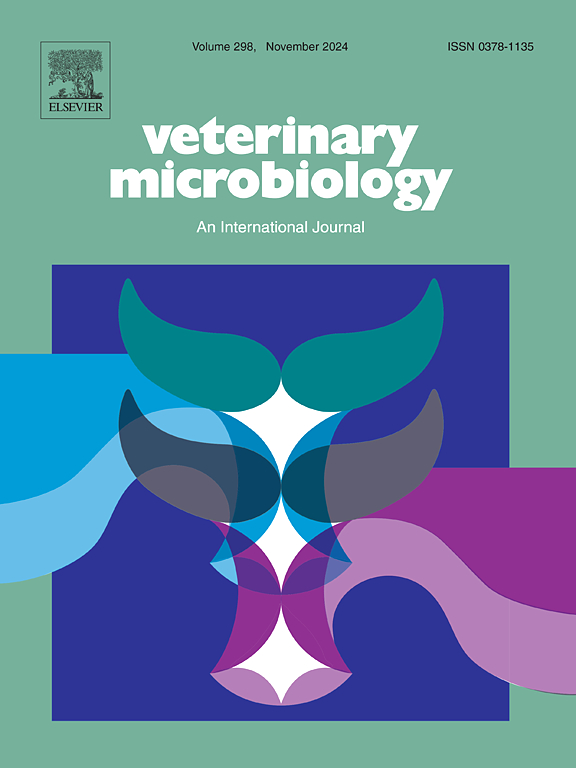Long noncoding RNA USP30-AS1 promotes influenza A virus replication by enhancing PHB1 function
IF 2.4
2区 农林科学
Q3 MICROBIOLOGY
引用次数: 0
Abstract
Long noncoding RNAs (lncRNAs) are important regulators of gene expression. Although evidence accumulated over the past decade shows that lncRNAs have key roles in the interaction between viruses and hosts, the functions of the majority of differentially expressed lncRNAs in response to viral infections remain uncharacterized so far. In this study, we have identified that USP30 antisense RNA 1 (USP30-AS1), a host antisense lncRNA, is hijacked by influenza A virus (IAV) to assist its replication. We show that USP30-AS1 is IAV-induced via the Janus protein tyrosine kinase-signal transducer and the activator of transcription (JAK-STAT) signaling pathway. Functionally, ectopic expression of USP30-AS1 significantly promotes IAV replication. Conversely, silencing USP30-AS1 suppresses IAV replication. Mechanistically, USP30-AS1 directly binds prohibitin 1 (PHB1) and modulates its protein stability and function. On the one hand, the binding of USP30-AS1 sequesters PHB1 away from the E3 ubiquitin ligase, tripartite motif containing 21 (TRIM21), thereby protecting the protein stability of PHB1. On the other hand, USP30-AS1 serves as a molecular scaffold for enhancing the interaction between PHB1 and interferon regulatory factor 3 (IRF3), which in turn impedes the nuclear import of IRF3. Therefore, our data unveil an important role of USP30-AS1 in promoting viral replication by modulating PHB1 stability and functions, providing a new insight into the role of lncRNAs in the interplay between IAV and host.
求助全文
约1分钟内获得全文
求助全文
来源期刊

Veterinary microbiology
农林科学-兽医学
CiteScore
5.90
自引率
6.10%
发文量
221
审稿时长
52 days
期刊介绍:
Veterinary Microbiology is concerned with microbial (bacterial, fungal, viral) diseases of domesticated vertebrate animals (livestock, companion animals, fur-bearing animals, game, poultry, fish) that supply food, other useful products or companionship. In addition, Microbial diseases of wild animals living in captivity, or as members of the feral fauna will also be considered if the infections are of interest because of their interrelation with humans (zoonoses) and/or domestic animals. Studies of antimicrobial resistance are also included, provided that the results represent a substantial advance in knowledge. Authors are strongly encouraged to read - prior to submission - the Editorials (''Scope or cope'' and ''Scope or cope II'') published previously in the journal. The Editors reserve the right to suggest submission to another journal for those papers which they feel would be more appropriate for consideration by that journal.
Original research papers of high quality and novelty on aspects of control, host response, molecular biology, pathogenesis, prevention, and treatment of microbial diseases of animals are published. Papers dealing primarily with immunology, epidemiology, molecular biology and antiviral or microbial agents will only be considered if they demonstrate a clear impact on a disease. Papers focusing solely on diagnostic techniques (such as another PCR protocol or ELISA) will not be published - focus should be on a microorganism and not on a particular technique. Papers only reporting microbial sequences, transcriptomics data, or proteomics data will not be considered unless the results represent a substantial advance in knowledge.
Drug trial papers will be considered if they have general application or significance. Papers on the identification of microorganisms will also be considered, but detailed taxonomic studies do not fall within the scope of the journal. Case reports will not be published, unless they have general application or contain novel aspects. Papers of geographically limited interest, which repeat what had been established elsewhere will not be considered. The readership of the journal is global.
 求助内容:
求助内容: 应助结果提醒方式:
应助结果提醒方式:


